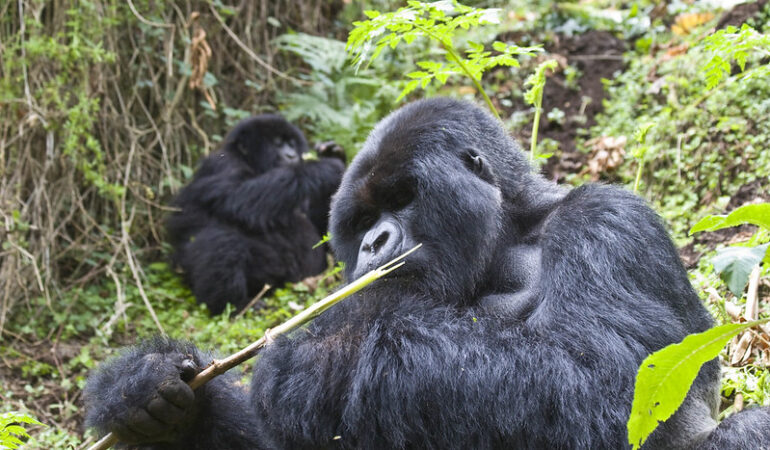
August 30, 2024
Ways to make gorilla trekking safe and enjoyable for children.
Gorilla trekking is an incredible experience, offering a rare opportunity to observe some of the world’s most majestic creatures in their natural habitat. For families with children, planning a gorilla trekking trip in Uganda or Rwanda can be particularly exciting but also comes with unique challenges. It’s essential to ensure the safety and comfort of children while making the experience enjoyable and memorable. Here are some tips to make gorilla trekking safe and enjoyable for children:
1. Understand the Age Limit and Physical Requirements
Gorilla trekking in Uganda and Rwanda typically has a minimum age requirement of 15 years due to the physical demands of the trek and the need to maintain calmness and silence around the gorillas. However, if you’re traveling with younger children, consider alternative activities like visiting gorilla orphanages or engaging in cultural tours that offer a glimpse into the lives of the local communities living near gorilla habitats.
For older children who meet the age requirement, ensure they are physically fit enough for the trek. Gorilla trekking can involve hiking through dense forests, steep terrain, and sometimes muddy paths, which can be challenging even for adults.
2. Prepare Your Children for the Experience
Preparation is key to making the trek enjoyable for children. Before the trip, talk to your children about what to expect during the trek, including the duration, the physical effort required, and the rules for interacting with gorillas. Watching documentaries or reading books about gorillas can help them understand the importance of conservation and the behavior of these magnificent animals.
Explain the importance of keeping a safe distance from the gorillas, staying quiet, and avoiding sudden movements. Emphasizing these points helps ensure their safety and shows respect for the animals’ natural behavior.
3. Choose a Suitable Trekking Group
When booking your gorilla trekking permits, try to arrange for a private or smaller trekking group. This allows for a more personalized experience, reducing the pressure on children to keep up with a larger group of adults. Private guides can adjust the pace of the trek to suit your family’s needs and provide more support to your children throughout the journey.

4. Pack Appropriately for the Trek
Packing the right gear is essential for a safe and enjoyable trek. Ensure your children have comfortable, waterproof hiking boots with good grip, as the terrain can be slippery. Dress them in long-sleeved shirts and trousers to protect against insect bites and stinging plants. A lightweight, waterproof jacket is also advisable, as the weather in the forest can change rapidly.
Don’t forget to pack essentials such as water, snacks, sunscreen, and a hat. Keeping children hydrated and energized will help maintain their spirits throughout the trek. Additionally, consider bringing a walking stick, which can help children navigate the uneven terrain.
5. Hire Porters for Extra Assistance
Hiring porters can greatly ease the burden of trekking with children. Porters can carry backpacks, water, and other supplies, allowing parents to focus on guiding their children through the trek. In some cases, porters can also assist children by providing a steady hand or support when the trail becomes challenging.
Using porters not only makes the trek easier but also supports the local economy, as porters are usually members of the local communities.
6. Take Frequent Breaks and Stay Patient
Children may need more frequent breaks than adults to rest and catch their breath. Plan to take regular short breaks during the trek, especially on steep or strenuous sections of the trail. Use these moments to enjoy the surroundings, spot other wildlife, and keep the mood light and enthusiastic.
Maintaining a positive attitude and showing patience can make a significant difference. Encourage your children with praise and keep them engaged by pointing out interesting sights along the way.
7. Respect Wildlife and Follow Park Rules
Safety is paramount when gorilla trekking, especially with children. Always follow the instructions of your guide, who will provide essential safety briefings before and during the trek. Guides are trained to handle interactions with gorillas and ensure the safety of the group.
Teach your children the importance of respecting wildlife by maintaining a safe distance from the gorillas, avoiding eye contact, and not eating or drinking in their presence. Following these guidelines helps prevent any potential aggressive behavior from the gorillas and ensures a safe encounter.
8. Capture the Moment and Celebrate the Experience
Gorilla trekking is a once-in-a-lifetime experience, and capturing the moment through photos or videos can make the memories last a lifetime. Encourage your children to take pictures, draw, or journal about their experience afterward. Sharing stories about the trek can be a fun way for children to reflect on the adventure and understand the significance of their encounter with the gorillas.
After the trek, consider celebrating the achievement with a special meal or activity. Acknowledging the effort and courage your children put into the trek can make the experience feel even more rewarding.
Gorilla trekking with children can be a safe and enjoyable adventure with the right preparation and approach. By understanding the requirements, preparing your children, and taking steps to ensure their comfort and safety, you can create a meaningful and memorable experience that fosters a lifelong appreciation for wildlife and conservation.
Whether it’s navigating the trails or encountering gorillas in their natural habitat, sharing this extraordinary journey with your children can be an unforgettable highlight of your family travels.



